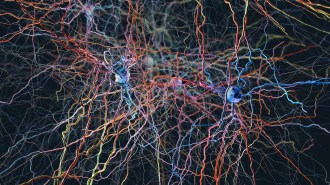Blind people can ‘see’ letters traced directly onto their brains
Findings point to a way to bypass damaged eyes and deliver ‘sights’ directly to the brain

After implanted electrodes stimulated this blind volunteer's visual cortex in a particular pattern, he was able to quickly perceive, and then write, the letter N.
M. Beauchamp et al/Cell 2020






